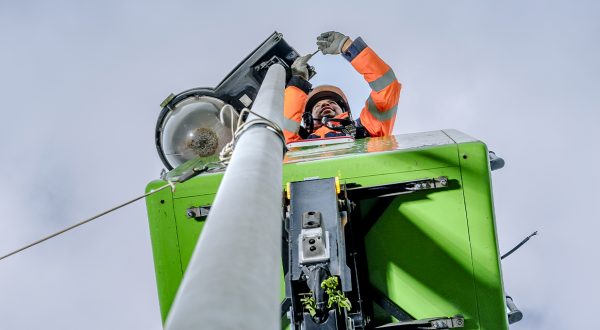
Light-emitting diodes give local communities more control over street lighting, while cutting energy use.
Urban lighting is the leading source of energy consumption in communities. No wonder it raises key issues in terms of budget planning and energy savings. Central to these issues is the light-emitting diode, which began to be used as an urban-lighting solution a decade ago, though with disappointing results at first.
“The first LED street-lighting solutions were sometimes less than optimal. As with any innovation, testing, validation and improvement were needed. The technical hurdles that originally hampered adoption of wide-scale urban use have all been eliminated, one by one,” explained Xavier Albouy, Director of the Citeos brand at VINCI Energies.
With its 10 to 15 year life, LED delivers a four-fold reduction in energy consumption.
Heat dissipation, which once impeded the rise of diodes and accelerated their degradation, is a thing of the past. LED can now be used at 100% capacity without any decline in performance. Providing service for 10 to 15 years, depending on the configuration, LED reduces electricity used for street lighting by 75%.
LED not only shrinks municipal electric bills, it provides residents with unrivalled comfort and municipal lighting authorities with unexcelled control. Just a few years ago, street lights had to warm up gradually before producing light. New-generation LED turns on – at the required output – and off instantly, with individual control for each pole.
“Street lights can now operate on demand and be coupled with other systems such as video cameras, pollution detectors, presence detectors, loud speakers and so forth, with light intensity tailored to selected criteria,” Xavier Albouy noted.
New Players
LED development has been a game changer in the lighting market. Historic players (OSRAM, General Electric, Philips) that built their business models on old technologies, like incandescent lamps, are now under attack from electronics firms (Samsung, LG, Panasonic, Chinese companies, etc.).
“Only 3% of street lights are changed annually, so it will certainly take 25 years before cities go 100% LED. But recent market developments demonstrate that street-lighting systems are evolving towards comprehensive solutions in response to city dwellers’ current uses and evolving needs,” Xavier Albouy added.
20/03/2017


